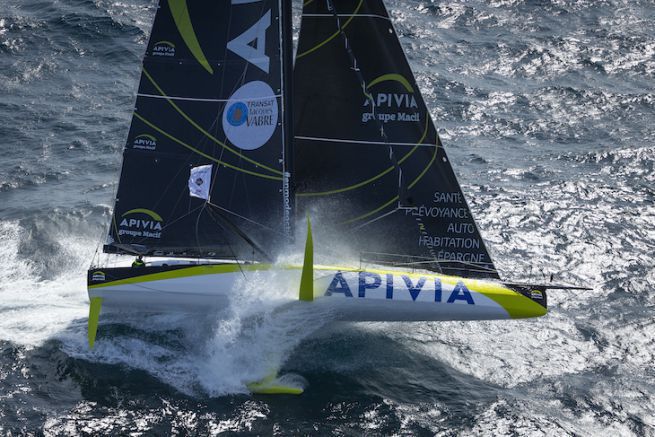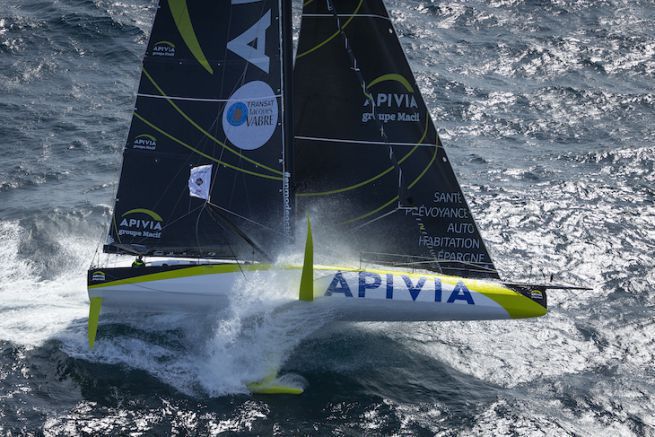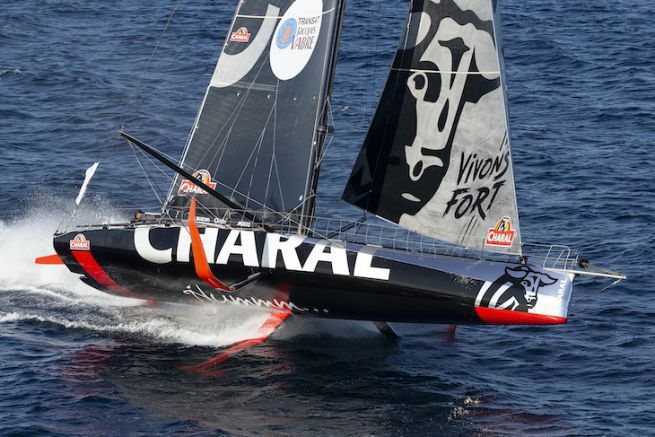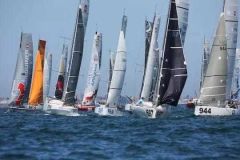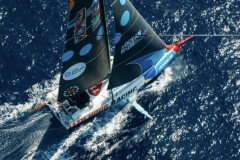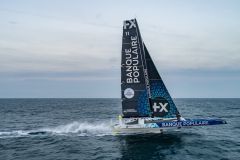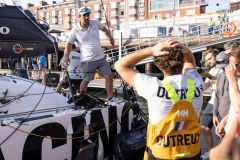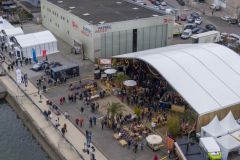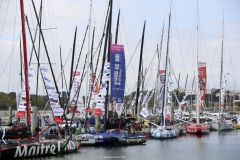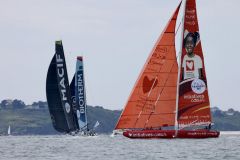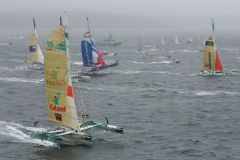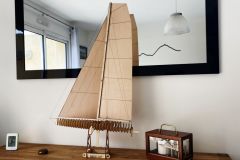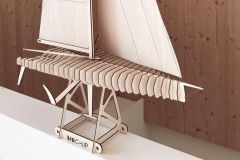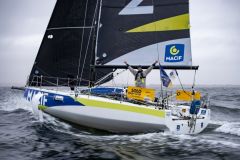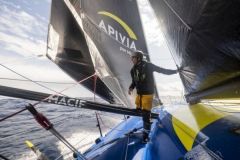During 2018, we learned of the change in ownership of the Volvo Ocean Race. Now called The Ocean Race, it is now owned by Atlant Ocean Racing Spain, led by Richard Brisius, Johan Salén and Jan Litborn, and will be held in two classes of boats.
The next edition of The Ocean Race (Whitbread Round the World Race from 1973 to 1997 then Volvo Ocean Race from 2001 to 2018) will take place during 2021-2022. To open the race to the ultra technological world of French ocean racing, the new organizers have decided to make IMOCA boats the new class of The Ocean Race. There will now be two types of boats on the starting line, the VO65s on one side and the IMOCAs on the other.
However, two years ago, the future of the 65-footers was not assured, as Johan Salen explains.
IMOCA, main class of The Ocean Race
"Two years ago we started looking at different options to bring a new class of boat into the race. Historically, the race has always created its own boats, first the Volvo Ocean 60s, then the Volvo Open 70s and more recently the Volvo Ocean 65s. The latter had been thought of to compete in two round-the-world races and by the time the last edition arrived in The Hague at the end of 2019, their career should have ended there."
The new management is therefore looking for replacements for the VO65s for the 2021-2022 edition and meets Antoine Mermod, president of the IMOCA class. The two entities got along well and a contract was signed stipulating that the IMOCA class would be the main class for the future of the event. It must be said that the organization particularly appreciates the technological aspect represented by these boats (especially the new foilers).
"Thanks to this collaboration, we merge the French sailing environment with the Anglo-Saxon and more globally international environment that offshore racing represents. Ocean racing is typically French and has real technical advantages and sponsors who have been in the business for a very long time. By integrating The Ocean Race, the IMOCA class will become more international, which will create even more value for the sponsors. It's an international event, which is not based on the same concept as the Vendée Globe, but which has a real media advantage. We are working with television, the stopover cities and social networks to provide maximum visibility. We have a very good potential for joint development."
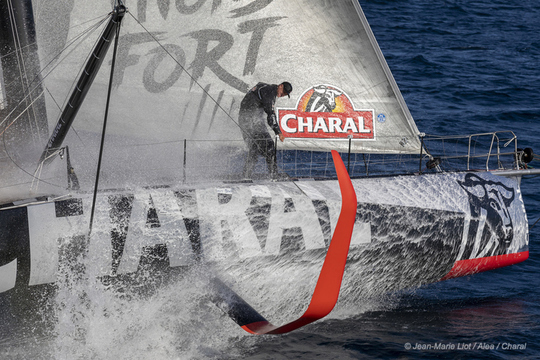
What future for the Volvo Ocean 65?
When the new organizers took over the race, six of the eight boats on the market belonged to the organization. They decided to sell them so that each team could own its own VO65. "These are strong boats that can continue to sail and compete in other races."
Finally, a few months after the resumption of the race, the organizers are wondering whether to include the 65-footers in this third round-the-world race. After all, they are solid boats, but the decision is not easy to make.
"We finally decided to have them participate in one more edition and to use this class to facilitate the entry of younger and newer teams into the world of ocean racing. That's actually why there are some pretty strict rules in this class."
Indeed, out of the 10 crew members on board, 7 must be under 30 years old and 3 under 26. In addition to these aspects, in order to respect the parity and to continue to develop the female sector, the crew will have to welcome on board 3 female crew members.
"We hope to help create a new generation of sailors for the future. This sport needs to renew itself, hence our decision to include VO65s. They are less complicated boats than the IMOCA boats, which are very sophisticated, and easier projects to start. If today the boats are all sold, two years ago, you could buy second-hand boats for less than a million euros.
It's also more complicated for young teams with no experience to develop an IMOCA boat both financially and technically. With the VO65s, everyone has the same boat."
If the organization succeeds in mixing IMOCA technology with the accessibility of the VO65, it hopes to have only IMOCA boats in 2025.
"You never know what the future holds, but the VO65s will have sailed around the world three times. Their design is starting to age and the boats are accumulating a lot of miles. We hope to have a project base with enough level and experience to move solely to IMOCA in 2025."
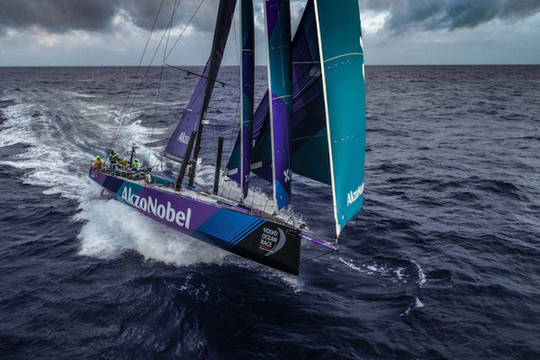
Different rules, different ranking
Two different classes means two different rankings. The number of crew members on board will not be the same either. While there are 10 crew members on board the VO65s, there will only be 5 on the IMOCAs. Indeed, the latter are more adapted to solo or double-handed sailing, offering less space on board. This is not a problem for the general manager.
"The modern IMOCA boats are very well adapted to crewed sailing. They are very sophisticated boats and there are not too many two or three of us on deck to make these foilers work well. Of course, some boats are less comfortable with this aspect, like Hugo Boss, whose design is quite extreme. On other boats, such as Charal or Arkea Paprec, it will be enough to make small modifications, such as the steering system or solutions for sleeping inside. Generally speaking, and from a performance point of view, the architects don't see much change. We'll just have to find solutions for living on board."
On the next edition, we will also find women sailors. As a reminder, the organization encouraged crews to include women in their crew for the 2018/2019 edition. Thus, in 2021, the VO65s will have to have at least three female sailors on board and the IMOCAs at least one.
"This rule proved to be very positive on the last edition and we all agreed to continue with a similar concept."
